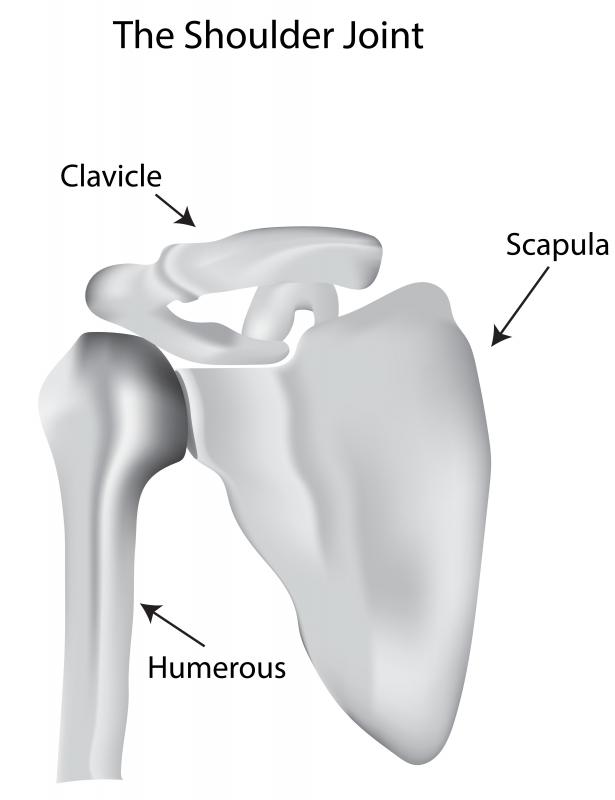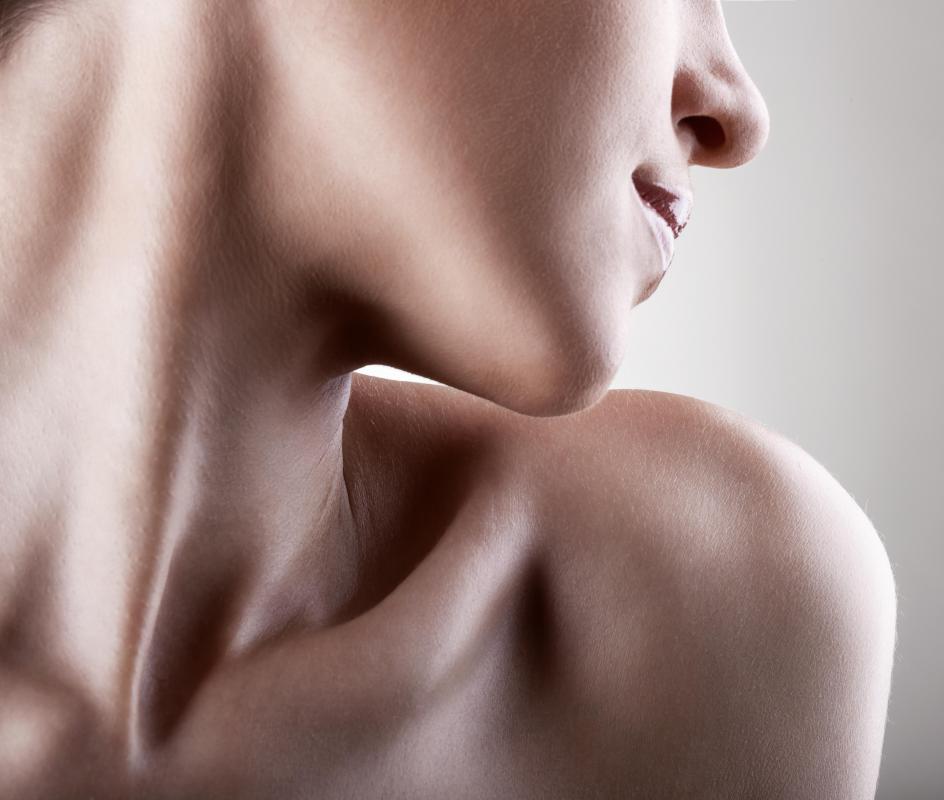At WiseGEEK, we're committed to delivering accurate, trustworthy information. Our expert-authored content is rigorously fact-checked and sourced from credible authorities. Discover how we uphold the highest standards in providing you with reliable knowledge.
What Is the Coracoclavicular Ligament?
The shoulder is a complex joint built to provide the greatest range of motion possible of any joint in the body. Comprised of four different connections linking five bones, this multifaceted junction attaches the arm to the body through a series of muscles and ligaments. The coracoclavicular ligament is one of four important structures that attach the bones within the shoulder.
The shoulder joint links the humerus, or upper arm bone, to the sternum, or chest bone. This joint also connects to the clavicle or collar bone and to the scapula, also referred to as the shoulder blade. Ligaments or bands of fibrous tissue such as the coracoclavicular ligament aid in bonding the shoulder blade in position while allowing this bone the necessary movement essential to functional range of motion by attaching to one of the three bony protuberances of the shoulder blade: the spine, acromion, and coracoid process. The coracoid process is located on the superior border whereas the spine runs across the upper section of the scapula; it transforms into the acromion in the back, or posterior, of the scapula.

Fastening to the thick, arched projection of the coracoid process, the coracoclavicular ligament connects the posterior section of the shoulder to the anterior portion. This is accomplished through an attachment of this ligament to the clavicle or collar bone. The clavicle acts as a bracing system for the shoulder and allows the shoulder to be held away from the rib cage.

Aiding in the vertical stability of the shoulder joint that permits the arm to be suspended, the coracoclavicular ligament is a triangular band divided into two sections: the trapezoid and the conoid. The trapezoid is positioned anterior and lateral to the conoid. Its main function is to avoid compression of the acromioclavicular joint, one of the main shoulder joints.

The conoid portion of the coracoclavicular ligament, situated between the base of the clavicle and the base of the coracoid process, plays an important role in supporting the shoulder joint. This cone-shaped section aids in protecting the shoulder joint from injuries, especially from superior displacement. Superior displacement of the shoulder is the abnormal movement of the shoulder up and out of the glenohumeral joint, the ball and socket connection that the head of the humerus bone rests in.

Other injuries that can occur in the coracoclavicular ligament include strains or tiny micro-tears in the fibers of this ligament. Severe trauma to this fibrous tissue can cause the ligament to rupture or break free of its attachment to the coracoid process, known as the collar bone. When this band becomes detached, separation of the shoulder can cause shoulder and arm dysfunction.
AS FEATURED ON:
AS FEATURED ON:















Discuss this Article
Post your comments